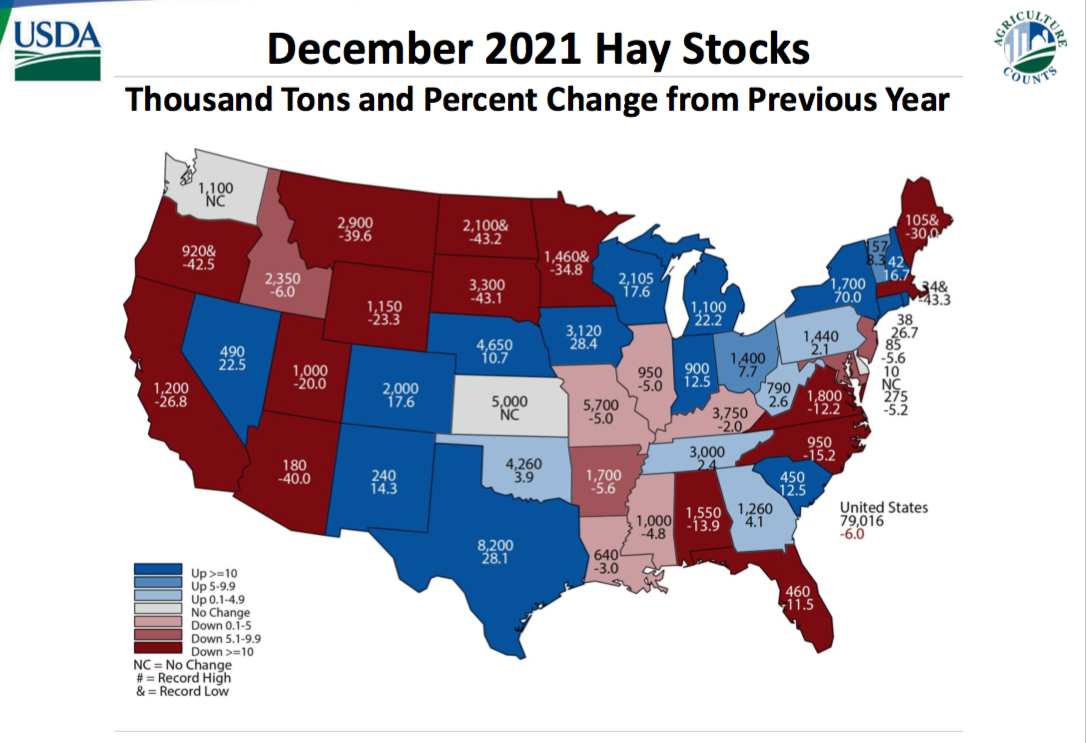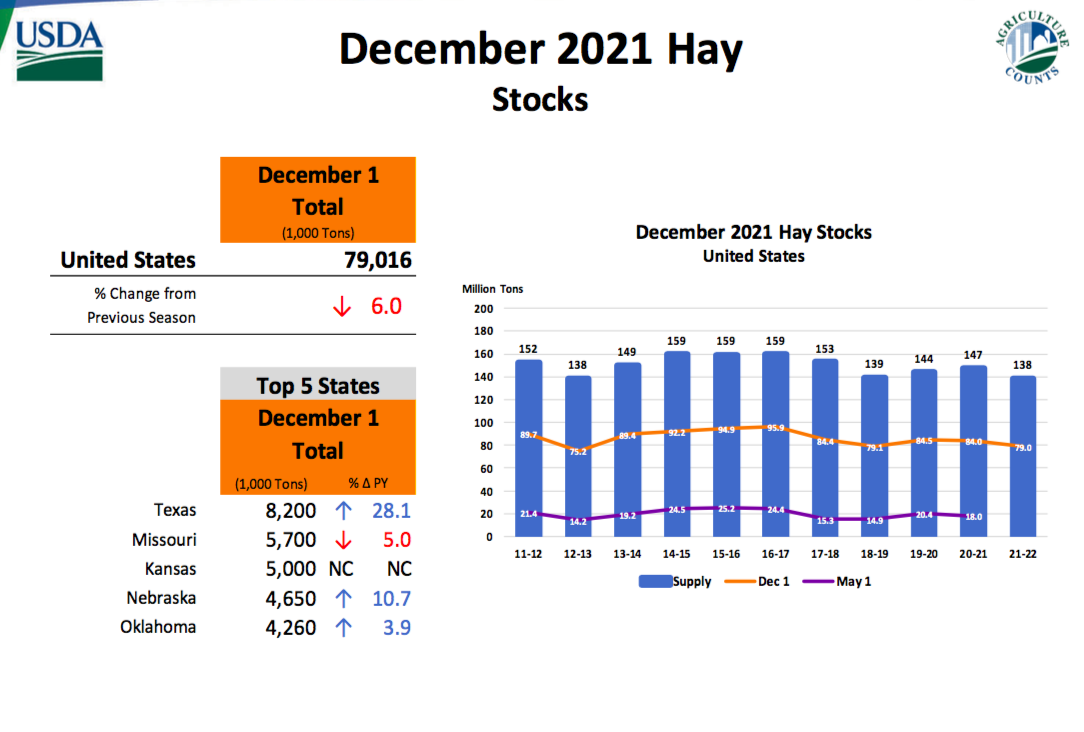USDA’s January Reports Reveal Hay Stocks Hit a 10-Year Low in December

Dry conditions in the West have plagued producers for months. And while some recent relief has come in the form of rain, a new USDA report shows just how dire the hay situation is for many livestock producers.
USDA Chief Economist Seth Meyer says as a result, hay stocks are now the lowest we’ve seen since 2012/2013.
“So, in terms of coming off of the drought, you can see the impacts of that Western drought,” Meyer says. “Thankfully, it's been raining in some areas there, but you can see the impacts of those Western drought, in a lot of different variables.”

Rains have relieved some issues in the West, but not near enough to scratch the surface and erase the severeness of a multi-year drought. The latest U.S. Drought Monitor shows 95% of the West is still covered in drought. There are signs of improvement, as the Drought Monitor showed the area considered to be in D3, or Extreme Drought, in the West improved nearly 8 points in just a week.

USDA’s report also included final 2021 crop production numbers, which shows areas covered by drought also saw a reduction in feedgrain production. USDA compared 2021 yields to 2020, further evidence of how the drought weighed heavily on feed production this past year.
USDA's largest year-over-year revisions came in South Dakota and North Dakota where USDA took another 24.5 bu. per acre off North Dakota's state average yield for 2021. South Dakota saw its statewide yield cut by 16.7 bu. per acre year-over-year.

From corn to hay, Western livestock producers are faced with tight feed situations. It’s also causing some tough decisions to be made. Meyer says proof is in the latest cattle numbers showing a shrinking herd.
“I think what I'm going to be looking for is this cattle report coming up at the end of the month, where we're we're going to get ourselves a couple of views," he says. "We talk about beef cattle and beef prices, and all these things being in the news an awful lot recently. So I think when I look forward to the cattle report, we're going to look at how many animals are there available to be put on feed? How are producers in the West, and in general, responding to profitability? Also, what are we going to observe in terms of cow numbers and how many folks didn't hold cattle over winter because of the concerns? We're talking about being in in the contraction phase of the cattle cycle right now. So some of that is induced by Western drought. So I do think that these hay stocks have contributed to that."







